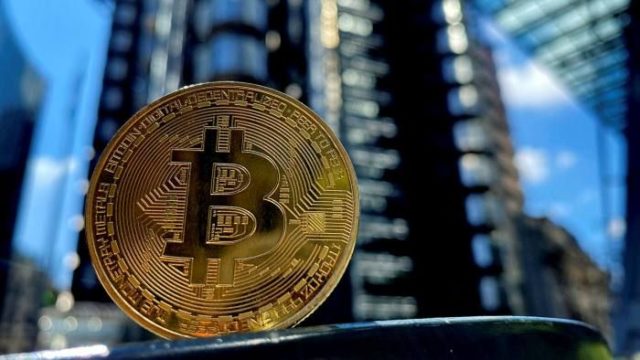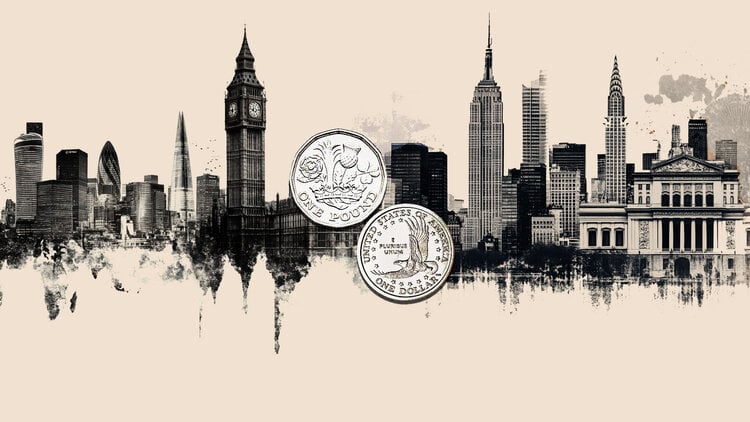Six months after invading the Ukraine a Russia it is mired in a slow war it did not anticipate but is succeeding on another front – its oil-dependent economy is in a deep recession but is proving much more resilient than expected.
“I’m driving through Moscow and the same traffic jams are there as before,” says Andrey Nechaev, who was Russia’s economy minister in the early 1990s.
The disposition of China and gives India to buy cheap Russian oil has helped, but Nechaev and other analysts say the country’s economy has begun to decline and is likely facing a prolonged period of stagnation as a result of Western sanctions.
On the surface, the situation hasn’t changed much, except for a few empty storefronts that once housed Western brands that fled the country. O McDonalds is now called “Vkusno i tochka” or “Tasty, and that’s it” and coffees from Starbucks are gradually reopening under the thinly disguised Stars Coffee brand.
The exodus of Western companies, and wave after wave of punitive Western sanctions against Russia’s vital energy exports and financial system, are having an impact, but not in the way many expected.
Nechaev, who presided over some of Russia’s most turbulent economic periods and helped steer its transition to a market economy, credits the central bank for some of that.
O ruble dropped to a record low from the dollar earlier this year after the invasion, when the West froze about half of Russia’s $600 billion foreign exchange reserves. But it returned to its strongest level against the US dollar since 2018.
This is largely the result of aggressive capital controls and interest rate hikes in the spring, many of which have now been reversed. Interest rates are now lower than they were before the war, and the central bank says the inflation which hit almost 18% in April, is slowing and will stay between 12% and 15% for the whole year.
The central bank also revised upwards its GDP forecast (GDP ) for the year and now expects it to shrink by 4% to 6%. In April, the forecast was for a contraction of 8% to 10%. The International Monetary Fund (IMF ) also now forecasts a 6% pullback.
It helped that the Kremlin had eight years to prepare for this scenario, spurred on by sanctions the West imposed after Moscow annexed the Crimea in 2014.
“Mastercard’s departure from Visa had little impact on domestic payments because the central bank had its own alternative payments system,” says Nechaev. Russia set up the Mir credit card and its own transaction processing system in 2017.
And there’s a reason Russian fans of McDonalds and Starbucks still manage to get their fix of fast food, says Chris Weafer, founding partner of Macro Advisory, a consultancy that advises multinational companies in Russia and Eurasia.
Since 2014, many Western brands in Russia have caved in to government pressure and regionalized some or all of their supply chains. So when these companies left, it was relatively easy for Russian buyers to acquire and continue to run them by simply changing the wrapper and packaging.
“Same people, same products, same offer,” says Weafer. It’s not a completely watertight strategy, however.
The rebranded McDonald’s stores reported a shortage of French fries in mid-July as Russia’s potato harvest fell short and foreign suppliers failed to fill the gap due to sanctions.
Can Russia’s energy boom continue?
The continuity of fast food is one thing. Russia’s long-term stability depends on its energy sector, still by far the biggest source of government revenue.
To say that high energy prices have so far helped Russia would be an understatement.
The International Energy Agency (IEA ) says that the country’s revenues from the sale of oil and gas to Europe doubled between March and July this year, compared to the average in recent years. This despite declining volumes. IEA data shows that gas deliveries to Europe have dropped by around 75% in the last 12 months.
O Petroleum it’s a different issue. The IEA’s March forecast that 3 million barrels a day of Russian oil would leave the market starting in April because of sanctions , or their threat, did not materialize. Exports held up, although analysts at Rystad Energy see a slight drop over the summer.
The main factor has been Russia’s ability to find new markets in Asia .
According to Houmayoun Falakshali of commodities consultancy Kpler, most of Russia’s maritime oil exports have gone to Asia since the beginning of the war. In July this year, the share was 56%, compared to 37% in the same month of 2021.
Between January and July of this year, China increased its seaborne imports of Russian oil from the Urals at a deep discount by 40% compared to the same period last year, according to Kpler data. This is despite China’s initial efforts to avoid the appearance of taking sides in the war against Ukraine.
India’s seaborne imports increased by more than 1,700% over the same period, according to Kpler. Russia has also been increasing gas exports to China via a Siberian pipeline.
But it remains to be seen what will happen when Europe’s embargo on 90% of Russian oil goes into effect in December. An estimated 2 million barrels a day of Russian oil will be in limbo, and while some of that is likely to go to Asia, experts doubt demand will be high enough to absorb it all.
Falakshali says China can’t buy much more Russian oil than the current amount because of a domestic slowdown in demand and because it simply doesn’t need much more of the specific kind of oil Russia exports.
Pricing will also play a critical role in whether Russia can afford to continue with discounts to reach new markets.
“A 30% discount from US$ 120 a barrel is one thing”, points out Nechaev. “A discount starting at $70 is another matter.”
“Slower burn”
While global inflation is helping Russia’s energy sector, it is hurting its people. Just like the rest of Europe the Russians are already suffering a cost-of-living crisis, exacerbated by the war in Ukraine.
Nechaev, who helped usher Russia through a much more dramatic economic meltdown in the 1990s, is worried.
“In terms of standard of living, if you measure it by real income, we go back about 10 years,” he says.
The Russian government is spending to try to combat this. In May, it announced that it would increase pensions and the minimum wage by 10%.
Russia has a system in place where employees of companies that have “suspended their activities” can temporarily transfer to another employer without breaking their employment contract.
The country is also spending 17 billion rubles, or $280 million, buying bonds in Russian airlines, hampered by airspace bans and sanctions that prevent foreign manufacturers from maintaining and supplying parts.
It is technological sanctions, such as those affecting the airline industry, that could have the most profound impact on Russia’s long-term economic prospects. In June, the Secretary of Commerce of the United States Gina Raimondo, said global semiconductor exports to Russia have fallen by 90% since the start of the war.
This is hurting production of everything from cars to computers and, experts say, will leave it further behind in the global technology race.
“The impact of sanctions will be more of a slower burn than a quick hit,” says Weafer. “Russia is now looking at potentially a long period of stagnation.”
Nechaev is even more definitive. “At this point, the economic decline began,” he says.
Source: CNN Brasil
I am Sophia william, author of World Stock Market. I have a degree in journalism from the University of Missouri and I have worked as a reporter for several news websites. I have a passion for writing and informing people about the latest news and events happening in the world. I strive to be accurate and unbiased in my reporting, and I hope to provide readers with valuable information that they can use to make informed decisions.







